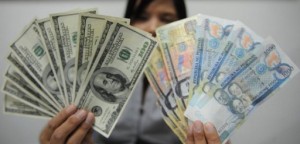Peso falls over slow global growth forecasts
MANILA, Philippines—The peso fell on Wednesday as concerns over global economic growth dampened appetite for emerging market assets.
The local currency closed at 41.875 against the US dollar, down by 1.5 centavos from the previous day’s finish of 41.86:$1.
Intraday high hit 41.84:$1, while intraday low settled at 41.935:$1. Volume of trade amounted to $690.99 million from $1.02 billion previously.
The depreciation of the peso and other key Asian currencies came amid estimates that China might have slowed down in the second quarter compared with its 8.1-percent growth in the first quarter.
It also came amid speculation that the International Monetary Fund might announce its move to slash its global economic growth forecast for 2012 from the existing 3.5 percent.
Article continues after this advertisementTraders said lingering problems confronting advanced economies, led by the United States and the eurozone, have been weighing down on outlook on the global economy.
Article continues after this advertisementMeanwhile, Governor Amando Tetangco Jr. of the Bangko Sentral ng Pilipinas said the weakening of the peso was due both to external and domestic factors.
“The weakening of the peso is a confluence of factors, such as events developing in Europe and domestic factors, including the move of the BSP regarding the SDA,” Tetangco said.
Over the weekend, the BSP announced it approved a regulation prohibiting foreign funds from being placed in the special deposit account (SDA) facility of the BSP.
The move is meant to temper speculative demand for the peso. Speculation was partly blamed for the local currency’s appreciation last week to a four-year high of 41.68:$1.
Regulators believe some foreign fund owners who were betting on the peso were placing their money to the SDA facility through banks.
The SDA facility is where banks may deposit their excess liquidity and earn interest in the process. The BSP said the facility should not accommodate foreign funds because it was created to primarily to siphon off excess domestic liquidity to help ensure manageable inflation.
